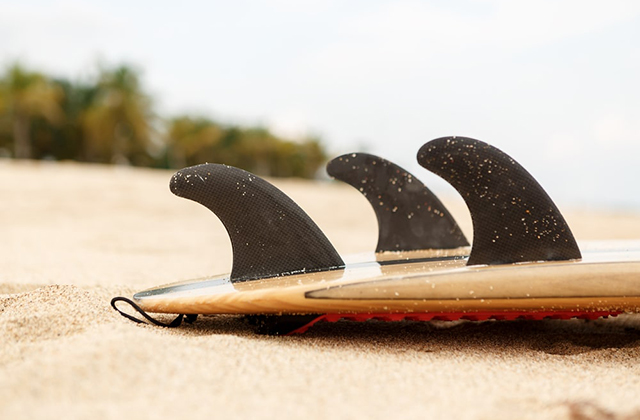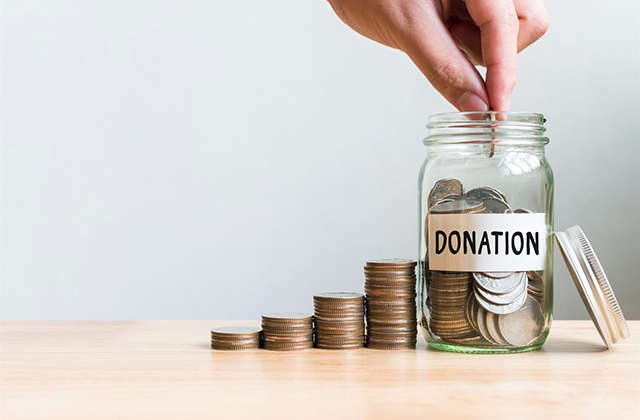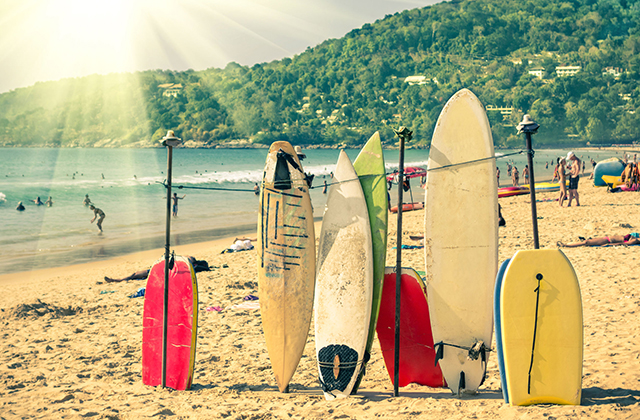Below, we’ve listed 10 tips for beginner surfers that should get you started down the right path and hopefully on to a lifetime of fun and from now on get engage by installing a surfing app in your phones.
Get a soft-top surfboard
There’s a reason that those “Wavestorm” surfboards Opens a New Window. are the best-selling surfboards in the world — they’re a lot of fun and a great entry-level board. When you’re just learning, your board is inevitably going to hit you. But fret not — with a soft top, your body will be able to take the abuse.
Surf somewhere with few people around
You may want to take on the more popular spots in your area, but popular spots are frequented by surfers who have most likely been there for years and are going to get the best waves. Start somewhere off the beaten path that isn’t crowded — you’ll get more waves and, as a result, get better, faster.
Practice your pop up
It may look dorky, but take a few minutes on the beach to work on popping up on your board. Lay your board in the sand (dig a little hole for your fins to sit in so they don’t break off) and lay down on it.
The key to standing up on a wave is a quick and fluid pop up — think of it as a real quick, yet controlled, push-up. Perfect the motion on the beach, and it will come to you much easier when you’re in the surf.
Shuffle your feet
This doesn’t have much to do with the actual riding of a wave, but if you shuffle your feet while walking in and out of the water, your chances of getting hit by a stingray are drastically reduced.
Ask anyone: The pain of a stingray barb going through your foot is enough to make a grown man cry — and definitely enough to cut your surf session short.
Find that sweet spot when paddling
You always see beginner surfers paddling too far back on their boards, making it do a wheelie and the going slow. On the flip side, some beginners paddle too far up on their boards, making the nose poke underwater.
What you need to do is find that sweet spot in the middle, mark it with a piece of wax and make sure to paddle in that position.
Stay perpendicular to the whitewash
This is one that my dad taught me years ago and still holds true. Think about it: If you and your board are caught horizontally by a wave, you’re going to get clobbered and pushed toward shore.
Instead, knife through whitewash as you’re paddling out by taking it straight on and with your body nice and low to your board.
Take that extra paddle
This is a tip that can be applied to surfers of all levels. When you’re paddling for a wave and feel the energy of it start to lift you into it, take one more strong paddle. The extra velocity will make it so you’re not stuck at the top of the wave, making the drop much easier.
Bend the knees, not your back
When you do get to your feet on a wave, make sure to bend your knees, as opposed to hunching your back over. You have way better balance with your knees bent and absorbing the energy of the wave. Plus, back bent and knees straight is plain bad style.
Fall flat
Let’s face it — you’re going to fall. And when you do, the best way to not injure yourself is to fall nice and flat. Never dive headfirst off your board; try to flop onto your side or back. Even jumping off feet first can be dangerous due to the uneven nature of the seafloor.
When you’re breaking the surface after falling, put your arms and hands in front of your face and over your head — you never know if your board is going to come rocketing back at you.
Have fun
This is by far the most important tip for any beginner surfer (and the main reason we do it). You’re going to wipe out, get in people’s way and generally kook out as you learn to surf. But that’s fine — everyone had to start somewhere!
There’s a saying in the surf world that goes something like this, “The best surfer in the water is the one having the most fun!”
Soak up those words of wisdom, get out there and have some fun!


